Newcomer Access to Green Spaces in Windsor
The National Urban Park (NUP) Program has three core objectives: conservation of nature, connecting people with nature, and advancing reconciliation with Indigenous peoples. Grasping what achieving the second objective will mean in relation to the proposed National Urban Park in Windsor requires an understanding of the demographics of the region. Newcomers - including immigrants, refugees, and international students - are an important piece of this.
And while conversations and actions to support newcomers are often separate from truth and reconciliation efforts, connecting newcomers to nature and the truth of Canada's history with Indigenous Peoples and Lands is also vitally important, and often aligned with their own lived experiences with colonial forces including war, climate change and famine. The NUP Program provides a critical opportunity to align these goals.
Canada currently has the highest level of immigration among all G8 countries. Over the past ten years, Windsor has drawn in more than 2,500 immigrants per year on average, making the city of 229,660 people diverse in its population makeup. While every newcomer and newcomer community's experience will be different, research tells us that public green spaces can help foster a sense of belonging, space, and stewardship for newcomers and can help ease an often difficult transition into a new community.
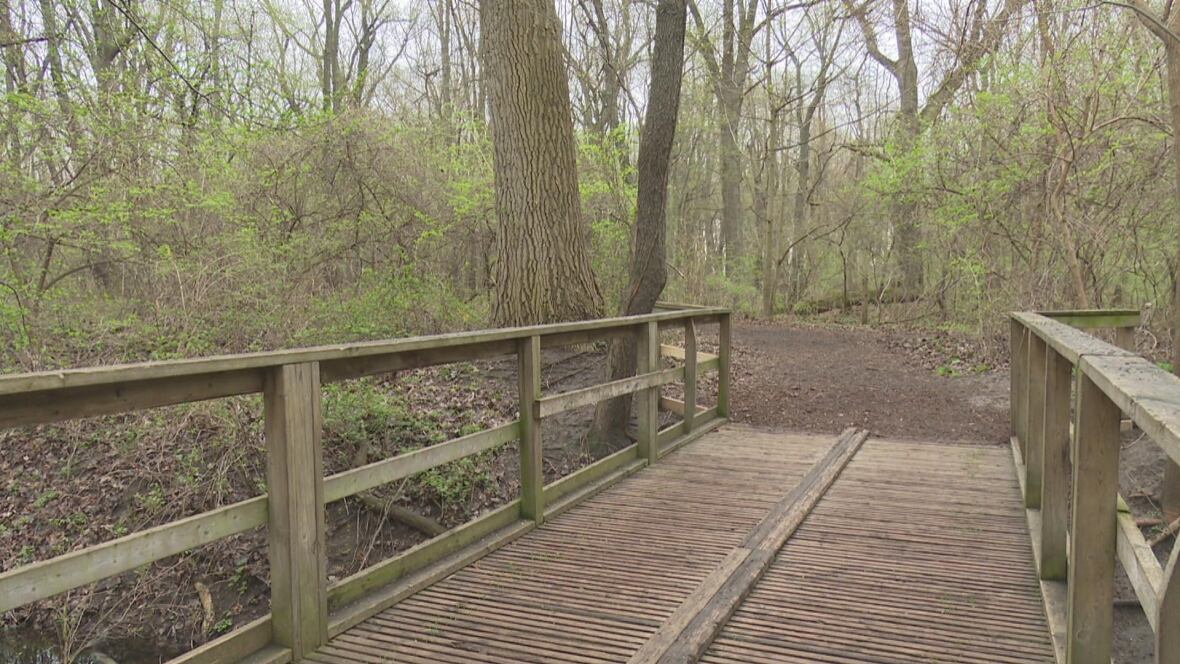
Source: Mike Evans/CBC
Greenspaces have been recognized for promoting healthy lifestyles and enhancing both the physical and psychological well-being of immigrant and non-immigrant communities. For newcomers, greenspaces may play a particularly pivotal role in smoothing an often difficult transition into their new communities. Some of the challenges newcomers face include income, housing, employment, social isolation, unfamiliar settings, family separation, foreign language constraints and psychological stress. Studies have found that by providing areas for relaxation, recreation, and social interaction, these spaces can nurture a sense of belonging and connection to the land and help newcomer mental and overall health.
Municipal parks and Windsor's beautiful 5.17 km waterfront trail have offered spaces for newcomers throughout the years to connect with one another, attend community events, support social integration and develop meaningful connections with their new environment. For generations, newcomer Windsorites have been able to make use of public green spaces, hopefully contributing to an increased sense of belonging and connection to the city. Gaining an understanding of newcomers' use of these spaces can help better shape the way cities plan, maintain, and program parks to be reflective spaces and increase newcomer community access to greenspaces.
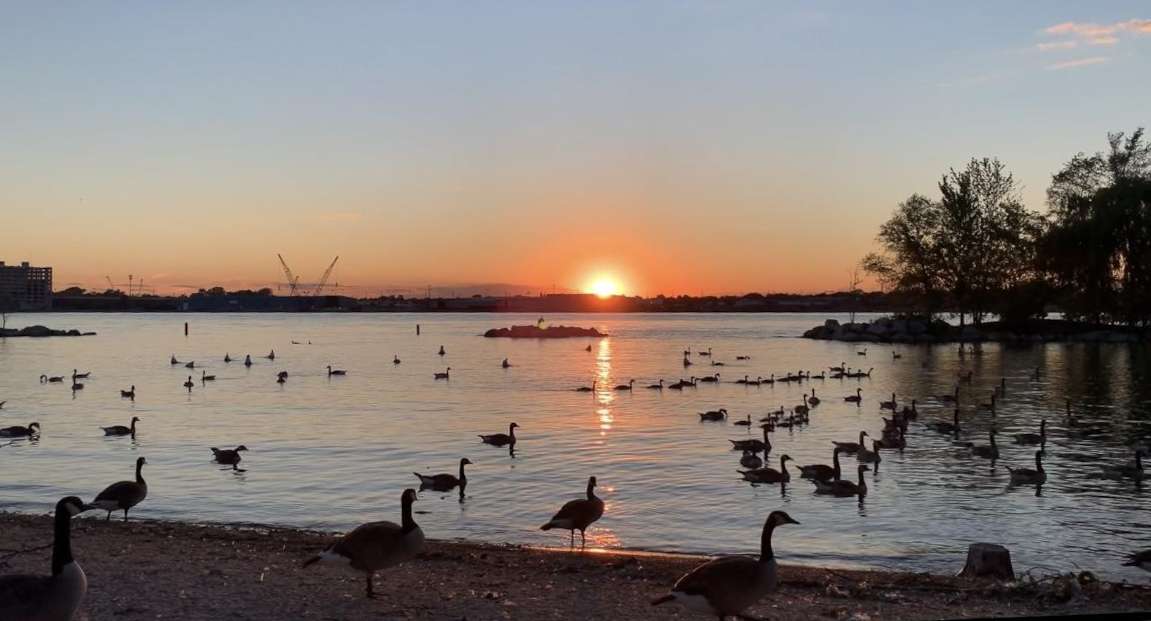
Many newcomers who arrive in Canada come from countries with less focus on what some would call “hermetically sealed” suburban-style living spaces (where the backyard provides private access to greenspace) that characterize many neighbourhoods in the Windsor-Essex region. They therefore may be more accustomed to relying on public green spaces as a means of accessing nature in addition to cultural connectivity and socialization. Indeed, local research conducted by Windsor Essex Local Immigration Partnership (WE LIP) for the City of Windsor's Parks and Outdoor Recreation Master Plan indicates the communal nature of newcomer's use of greenspaces. The study found that newcomers use parks for family-oriented recreational activity and that recreation facilities are seen as socializing venues.
Interestingly, the WE LIP study also found that of the 21 parks mentioned as favourites for newcomers in Windsor, 63% were located within the municipal ward where the newcomer respondent lived. Cross-referencing this with data from HealthyPlan, a free web mapping tool by CANUE, tells us that 52% of newly-arrived immigrants (or 11,103 individuals) live in areas where greater investment in parks could improve equity in Windsor. This statistic lends itself to the broader literature which indicates newcomers are at a higher risk than the general population for poor access to parks. This may be because the wards that newcomers land in are typically the most dense and urban characteristically, with the lowest access to parks due to less municipal investments into denser and lower income areas. Additionally, Windsor's newcomers have also cited lack of access to transportation to be a barrier for other aspects of daily life; it would be safe to assume as a result of this barrier in transportation that newcomers may be less likely than other residents to leave their ward or neighbourhood and explore other green spaces available to them as new Windsorites. Ensuring the connectivity of public transportation routes to green spaces may help increase opportunities for newcomers' connection with the land and the communities in which they have arrived.
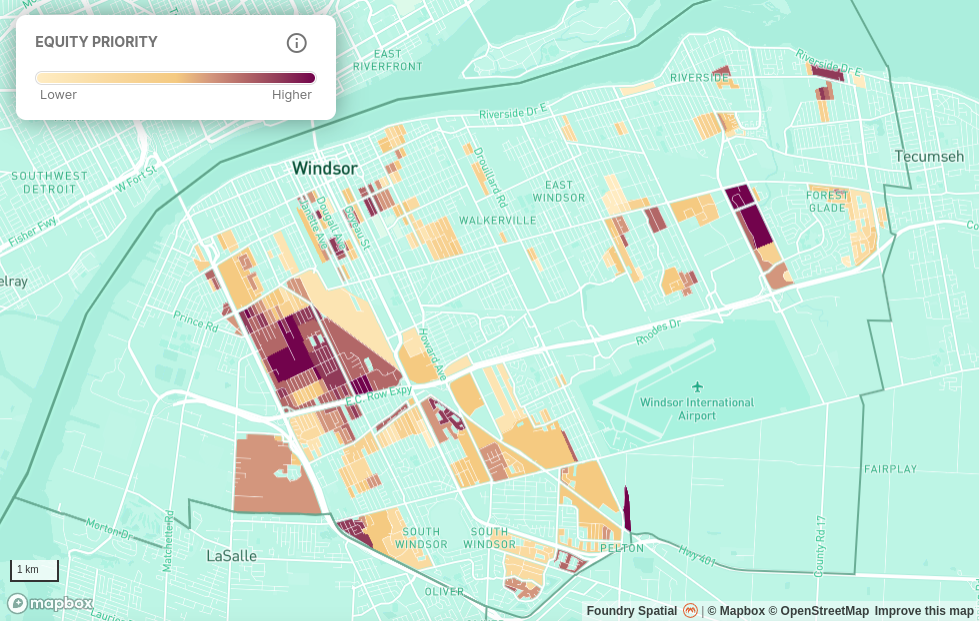
Equity priority areas in Windsor, defined as areas with higher than median proportions of newcomers and lower than median access to parks resources. (Source: HealthyPlan.City)
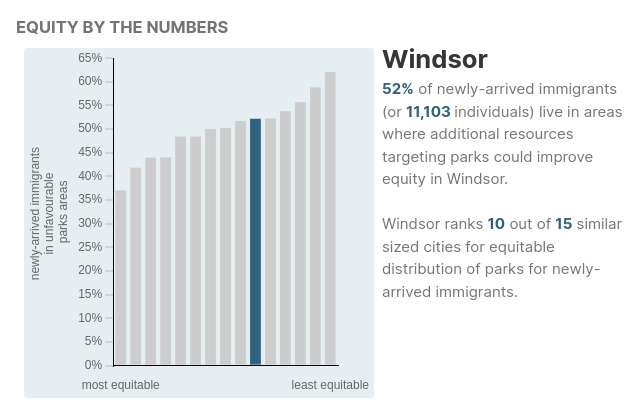
The proportion of newcomers who reside in areas lacking parks resources in Windsor, compared with similar sized cities. (Source: HealthyPlan.City)
As Windsor continues to welcome some of the highest rates of newcomers in Canada, with an immigration rate above the average for large urban centres across Canada and higher than other urban centres in Ontario, it is essential to recognize the impact our greenspaces have on nurturing a strong and cohesive community, embracing the diversity that enriches our city. It is crucial to plan, maintain and ensure that parks and urban green spaces in Windsor are inclusive and accessible to meet the needs of many newcomers. These spaces are incredibly important for helping newcomers settle into Windsor smoothly. They also help newcomers feel like they belong here and build connections to the community and the land.
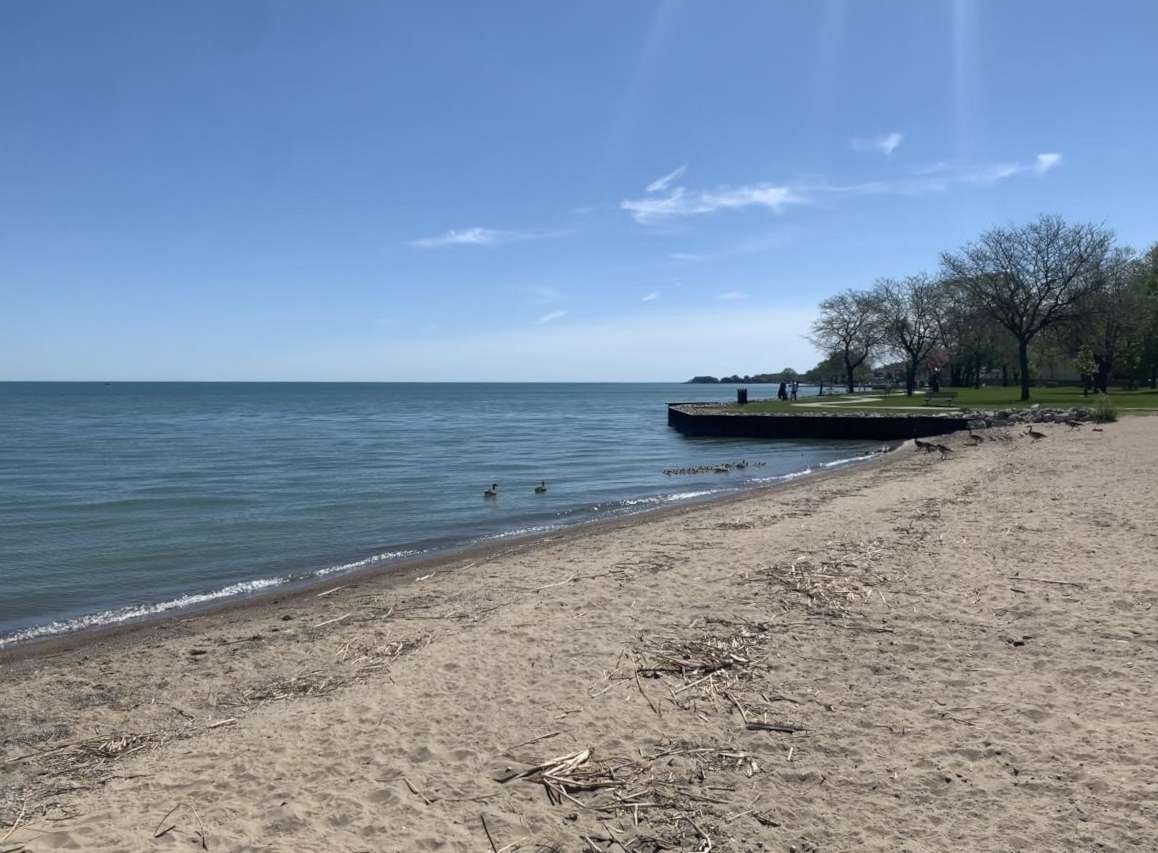
The proposed National Urban Park in Windsor could provide valuable opportunities for new Canadians to learn about and connect with the land and Indigenous existence on this land, as many studies have linked the benefits of being in nature to easing the often-difficult transition period. However, the introduction of the NUP does not necessarily mean access to nature will improve and therefore it is not enough to solely rely on the spaces of the NUP to increase access. The NUP could provide opportunities to prioritize a more comprehensive approach of increased greenspace access for newcomers to the region as federal funding of the NUP would free up monies the City currently uses towards maintaining and programming parks included in the proposal (including Ojibway Nature Centre, Ojibway Prairie, and Black Oak). Ensuring that this investment helps to make sure newcomer communities are served both by access to greenspace in their neighbourhoods and reliable active and public transportation to the NUP will be critically important.
We acknowledge with gratitude the land, air, water, fire and all the beings of creation that sustain us. We honour the longstanding relations of many First Peoples to this place since time immemorial (including the Anishnaabe, Haudenosaunee, Lunaapee, and Huron/Wendat Peoples). We acknowledge colonial harms. We commit to renewed and respectful relations to people, nature and this place.

® 2024 University of Windsor
